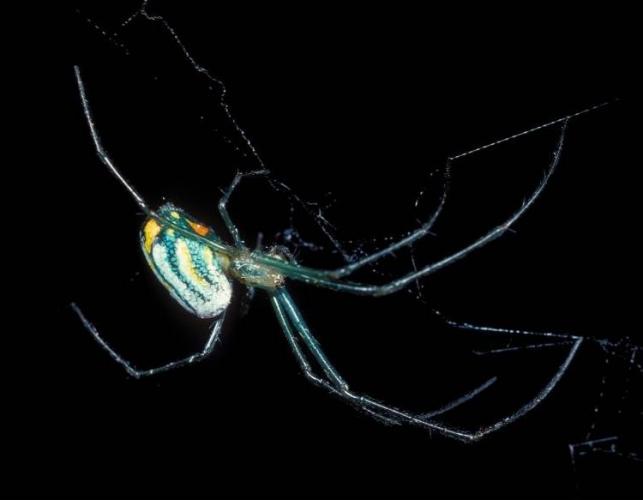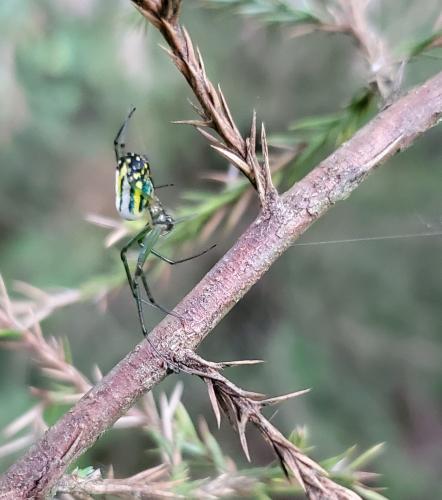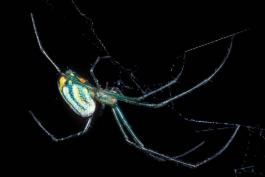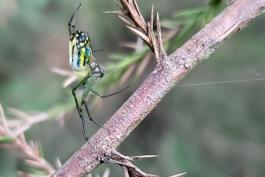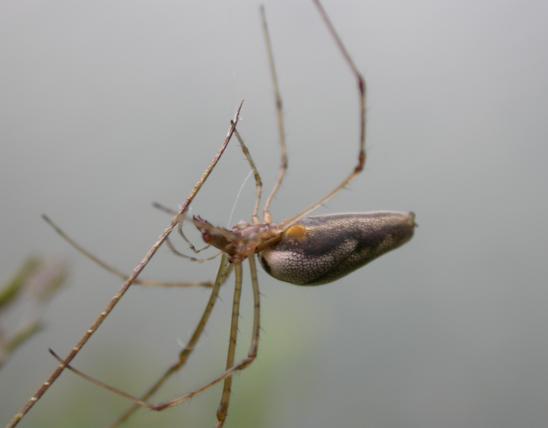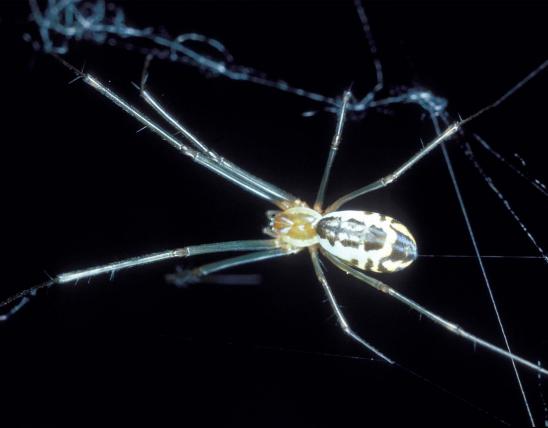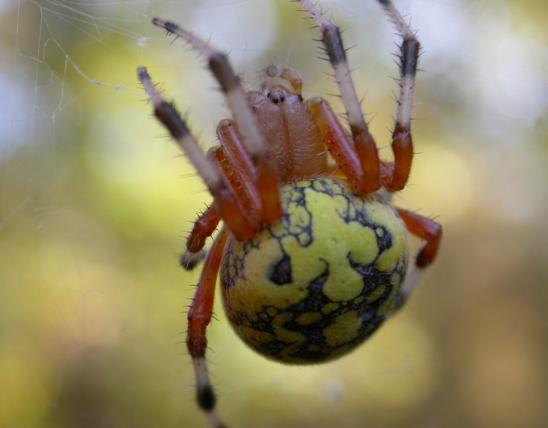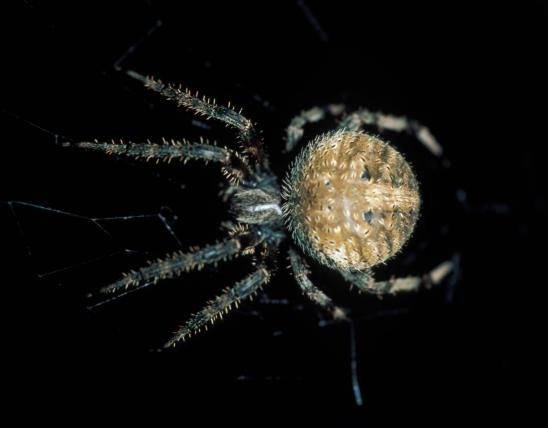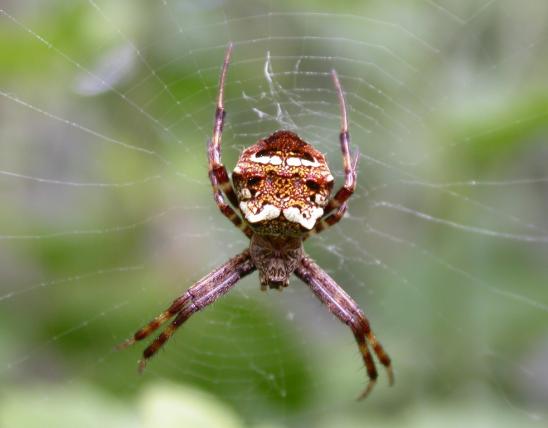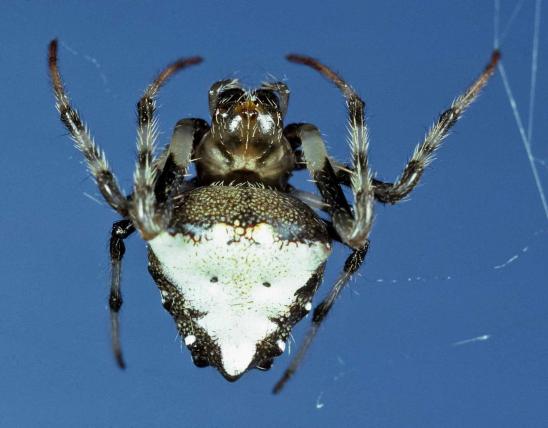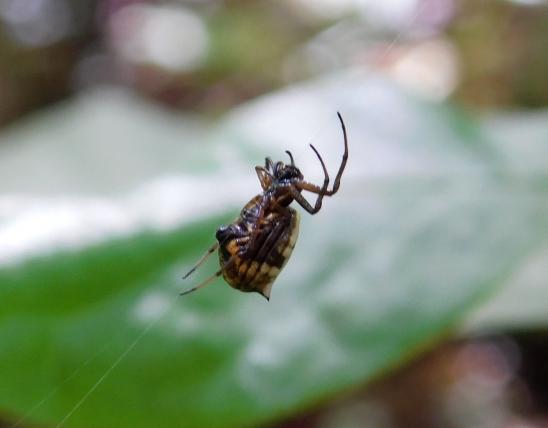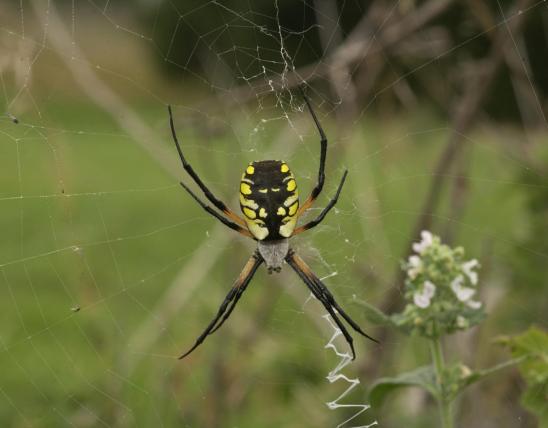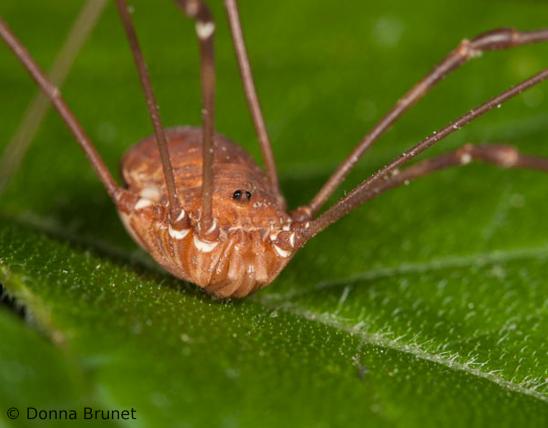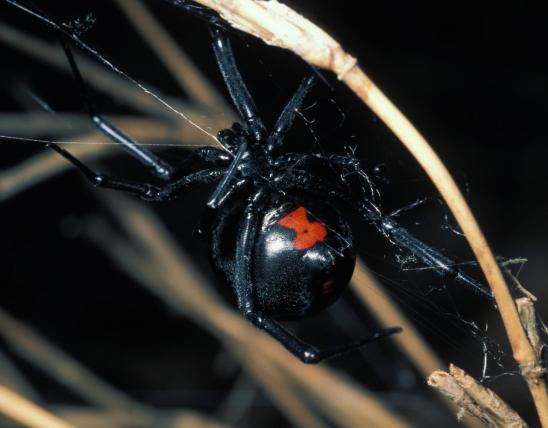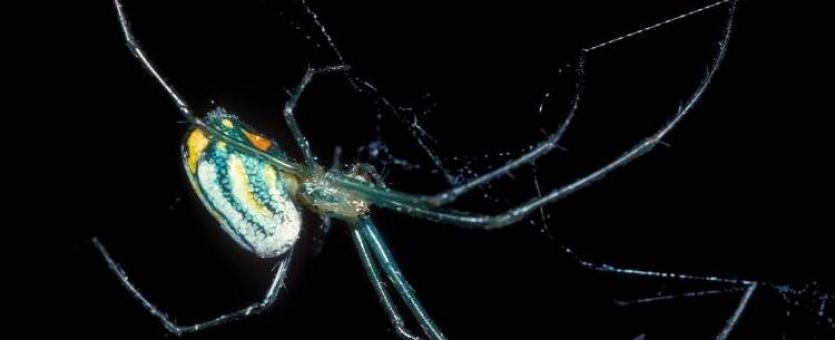
The orchard orbweaver is a colorful, delicate spider that makes circular webs that are usually positioned horizontally or at an angle to the ground. The spider typically hangs in the middle of its web, its back to the ground. The carapace is yellowish green, with brown stripes on the sides. The abdomen is somewhat elongated. The top of the abdomen (which usually faces downward) is silvery with dark stripes; the belly (which usually faces upward) can be variably colored with silver, greens, yellows, reds, and some blues. There is usually a yellow, orange, or red crescent on the belly. The legs are slender and long. Males are usually only seen when they are in a female's web courting or mating; they are smaller and their abdomens are more silvery-golden.
If you look down upon their webs, you will usually see the undersides of these spiders, as they tend to rest with their "backs" facing the ground. Though they are small, their shiny emerald greens and orangish spots near their spinnerets are rather eye-catching.
Length (not including legs): from about ⅛ to just over ¼ inch (females); males are smaller.
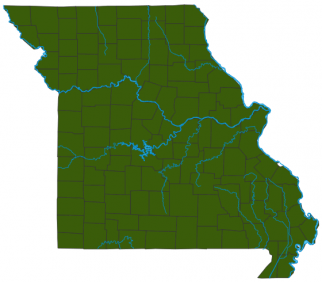
Statewide.
Habitat and Conservation
This delicate and beautifully colored spider lives in low bushes and damp woodlands. The females usually build their small webs in low vegetation and sometimes in small trees. Although this species may be abundant in wooded areas with dense undergrowth, it is not easily noticed because of its habit of quickly dropping into the leaf litter when disturbed.
Food
The low position of the web helps this spider to catch small flying insects, such as flies and leafhoppers.
Status
The Latin name for this species, venusta, means "beautiful," which is appropriate for this shining, multicolored, delicately patterned spider. It occurs throughout much of the eastern United States.
Life Cycle
As a general rule, spiders in our area hatch from eggs in spring and spend the growing season eating, maturing, mating, and laying eggs. Females are capable of creating webs; males are not. Females of this species deposit egg masses on leaves and twigs near the web. They continue creating egg cases as long as the weather holds out. As temperatures cool in fall, their metabolism slows, and they generally die when it freezes. Egg cases overwinter, and spiderlings hatch in spring.
Human Connections
Although many humans are "creeped out" by spiders, we are also often plagued by insects such as flies, mosquitoes, and gnats. The many small spiders of the world act as natural, nontoxic, organic "exterminators."
Ecosystem Connections
Spiders are little predators that help to control populations of the insects they capture. Being small themselves, they easily fall prey to larger predators such as birds, reptiles, and mammals. Many animals eat their eggs. Hummingbirds, vireos, and warblers steal webs from spiders in order to build their own nests.
